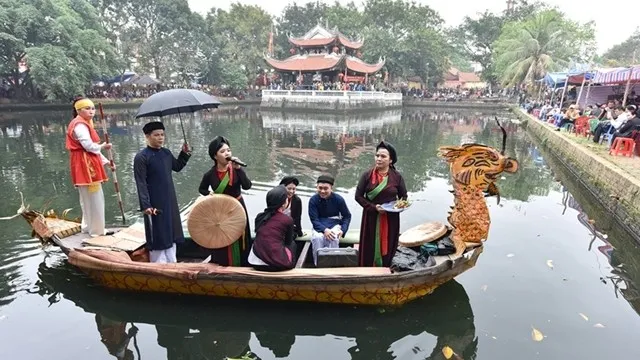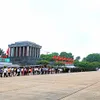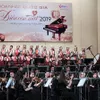Creative methods to promote heritages, tourism and new art forms

Researcher Pham Cao Quy granted an interview with Thoi Nay (Present Time) Newspaper, talking about creative methods to promote heritages and art forms.
Q: Intangible cultural heritages are considered as values of the past. What do you think about the ‘creation’ in arts?
A: Intangible cultural heritages are not immutable things, but are within the people and recognised only when they show them through their actions.
Creative practice of intangible cultural heritages means that artisans and practitioners consider heritages as a basis to create or re-create the intangible cultural values that are suitable to their life and culture. These values are not so different from the intangible cultural heritages that they have inherited. They can also be considered as new cultural values inspired by traditional heritages.
Q: So, how can we inspire the creativity of artisans to turn cultural heritages into resources?
A: Currently, the views on the preservation and promotion of the values of intangible cultural heritages in Vietnam and many other countries see certain changes in terms of both theory and awareness. In the past, agencies only focused on the collection of related documents; meanwhile the trend of preserving and promoting intangible cultural heritage right in the community has received much attention.
In order to encourage the teaching and creation of cultural values, making heritages live right in the environment they were born and developed in is one of the effective measures. Accordingly, it is essential to honour and set good remuneration policies for artisans and artists with know-how, creating favourable conditions for them to promote creative practices of intangible cultural heritages. They are actors who can promote cultural creation and hold and transfer the values that they have received and create for the future generations.
The preservation and promotion of cultural heritages should be associated with tourism, requiring the active and proactive participation of people. Cultural tourism is a special form, aiming to support visitors to find, discover and enjoy attractive cultural values, including heritages. Therefore, this type of tourism not only helps locals to raise their incomes but also creates great conditions for creative practices of artisans, contributing to protecting and promoting the cultural identities and heritages of Vietnam to international friends.
Q: What do you think about the contemporary artists who have great creativity but sometimes lack the connection with cultural heritages?
A: Traditional cultural heritage is the suggestive material for many contemporary cultural products. However, at times, young artists have focused on contemporary culture. This is mostly because we could not help them understand clearly the heritages’ values. In addition, the practitioners of cultural heritages have not made them more attractive because they have not had many chances to practice. Therefore, the intangible cultural heritages appear to be forgotten as part of the past.
In recent years, many artists have realised the importance of intangible cultural hertiages, so they have combined them with “contemporary breath” to create attractive cultural products. For example, several shows of artist Pho An My and musician Dang Tue Nguyen are the perfect combination of contemporary arts and the essence of the traditional culture.
The Seaphony Orchestra, which gathers over 50 artisans, instrumentalists and musicians from various ethnic groups around the country, uses different traditional and modern musical instruments. It has become a unique symphony orchestra, resonating both at home and abroad.
These successes should be promoted through the joining hands of the whole community.
Thank you very much for your interview!





